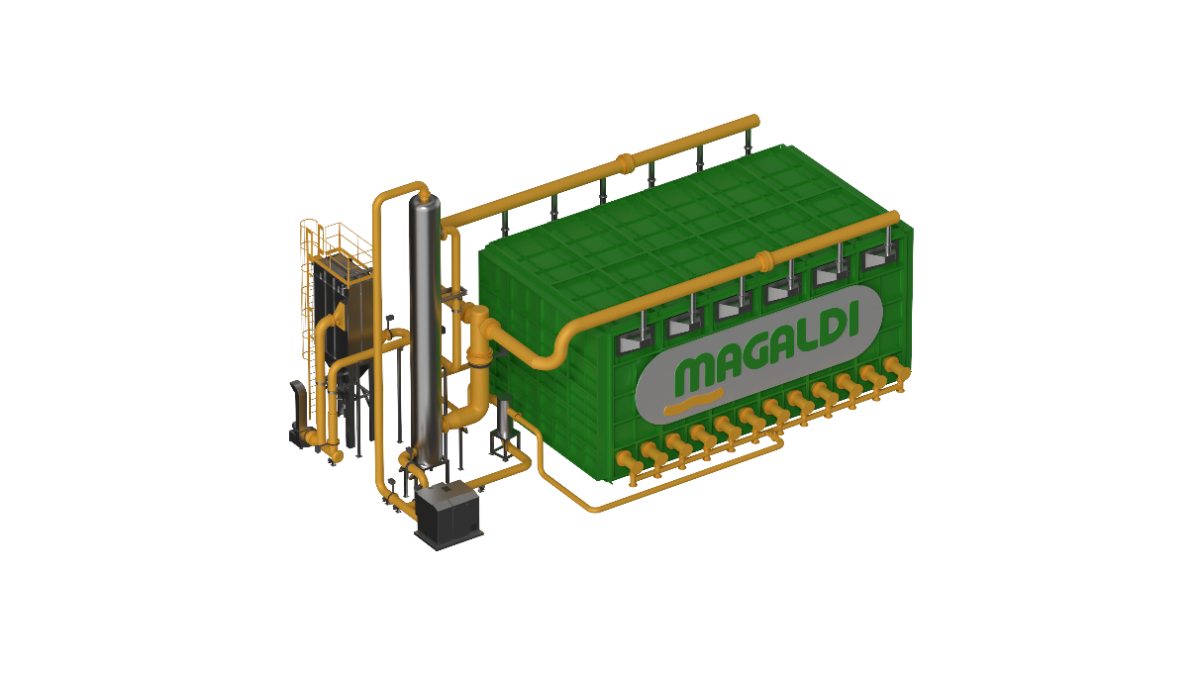Magaldi Green Energy, a unit of Italy-based dry bottom ash handling system provider Magaldi Power Spa, has developed a thermal storage system for long-duration storage based on a fluidized sand bed.
The Magaldi Green Thermal Energy Storage (MGTES) can be charged with renewable electricity or thermal energy such as waste heat generated by industrial thermal processes. Its discharge phase consists of the production of green thermal energy — steam or hot air — which can be used directly in industrial plants or for the generation of electricity using steam turbines.
“Our storage technology can be used in the steam section of existing thermoelectric power plants based on the Rankine cycle or combined cycle gas turbines (CCGT) plants,” Letizia Magaldi, executive vice president at Magaldi Green Energy, told pv magazine.
The system consists of a blower, a fluidization air blowing system, a fluidization air suction system, an air filter and fan, an air pre-heater, and an integrated thermal energy storage module. Silica sands are the system’s storage media.
The fluidization system is the core of the technology and is claimed to have high thermal diffusivity. The manufacturer ensures it is well insulated and that thermal losses are lower than 2% per day. The absence of convection and the insulation of the tank are said to limit the heat exchange with the outside of the casing, thus minimizing energy losses. The system is discharged by reversing the integrated heat exchanger within the fluidized bed and the stored energy is released as superheated steam.
The system’s operating temperature can reach up to 1,000 degrees Celsius and its roundtrip efficiency is reportedly over 90% for heat production and between 35 and 45% for electricity generation.
Magaldi Green Energy claims the MGTES has a 30-year lifetime and describes it as a customizable solution with different capacities. “By varying the mass of solid particles contained in each module, it is possible to configure a storage capacity between 5 and 100 MWh,” it further explained.
The system Capex is estimated by the company at around $65,000/MWh. “We expect to reduce costs by at least 50% over the next 10 years from economies of scale and design improvements,” Magaldi stated.
*The article was updated on November 5 to reflect that the system Capex is $65,000/MWh.
This content is protected by copyright and may not be reused. If you want to cooperate with us and would like to reuse some of our content, please contact: editors@pv-magazine.com.









By submitting this form you agree to pv magazine using your data for the purposes of publishing your comment.
Your personal data will only be disclosed or otherwise transmitted to third parties for the purposes of spam filtering or if this is necessary for technical maintenance of the website. Any other transfer to third parties will not take place unless this is justified on the basis of applicable data protection regulations or if pv magazine is legally obliged to do so.
You may revoke this consent at any time with effect for the future, in which case your personal data will be deleted immediately. Otherwise, your data will be deleted if pv magazine has processed your request or the purpose of data storage is fulfilled.
Further information on data privacy can be found in our Data Protection Policy.